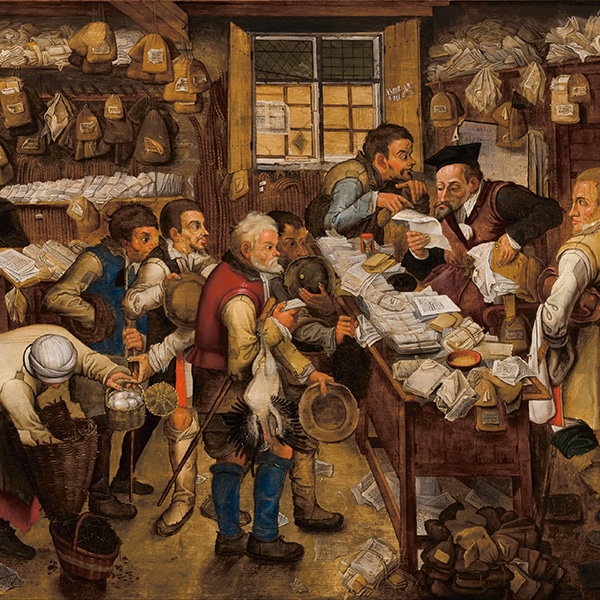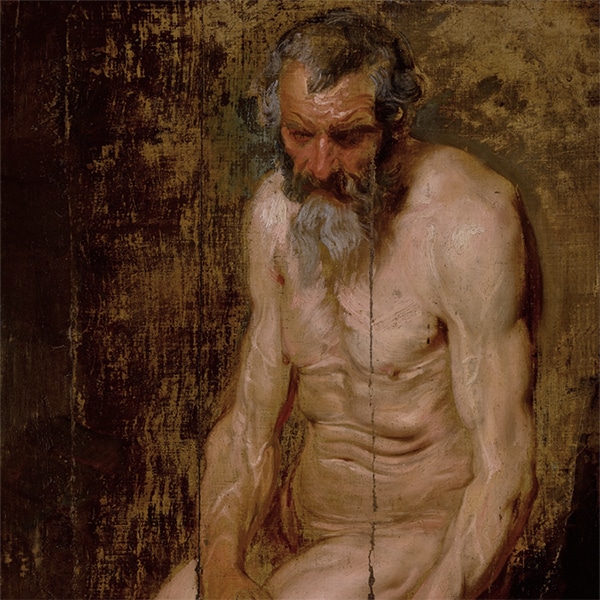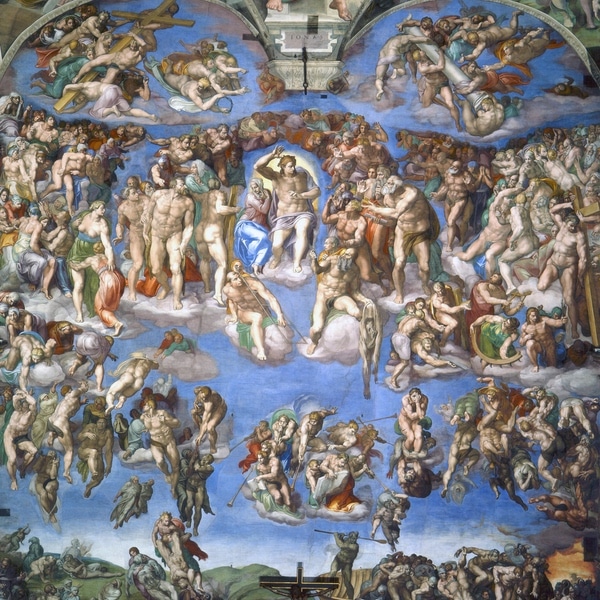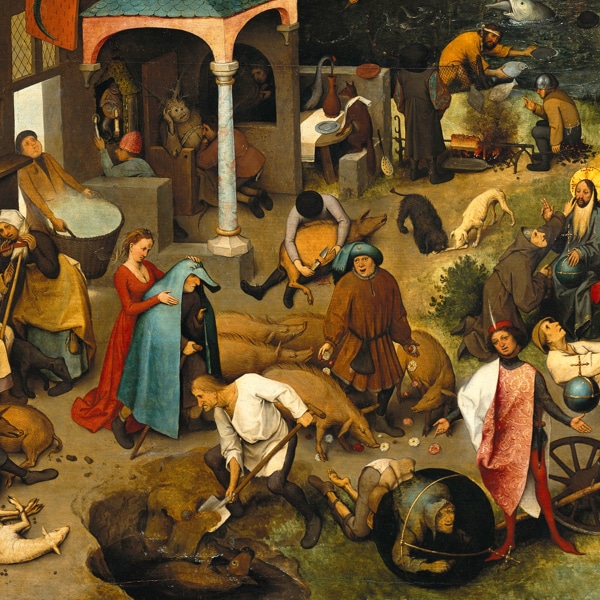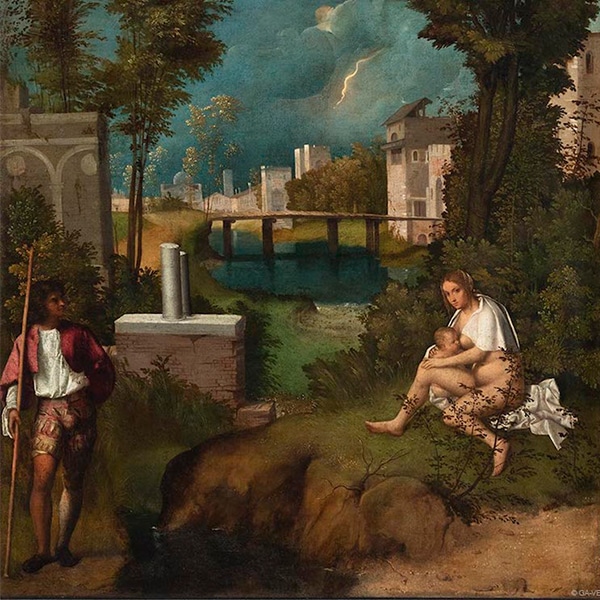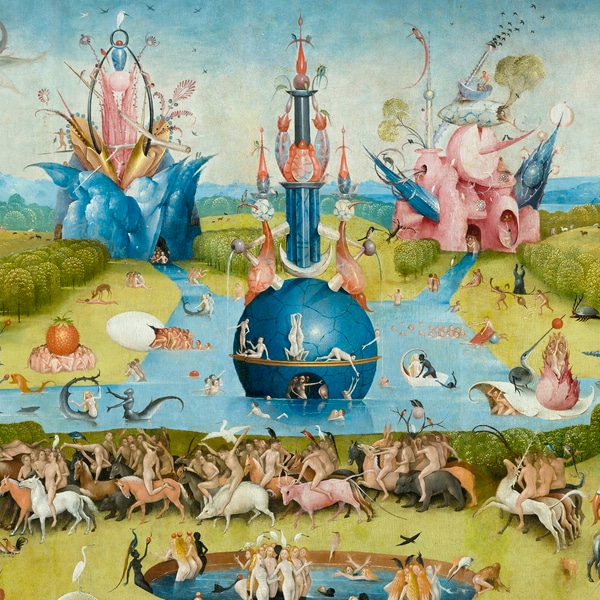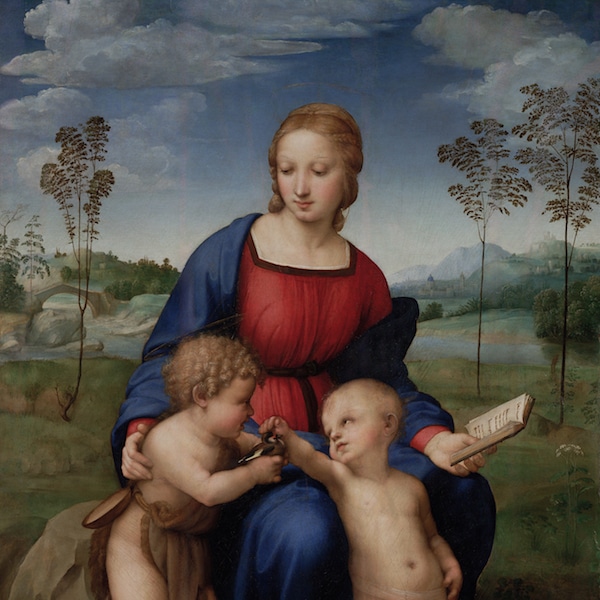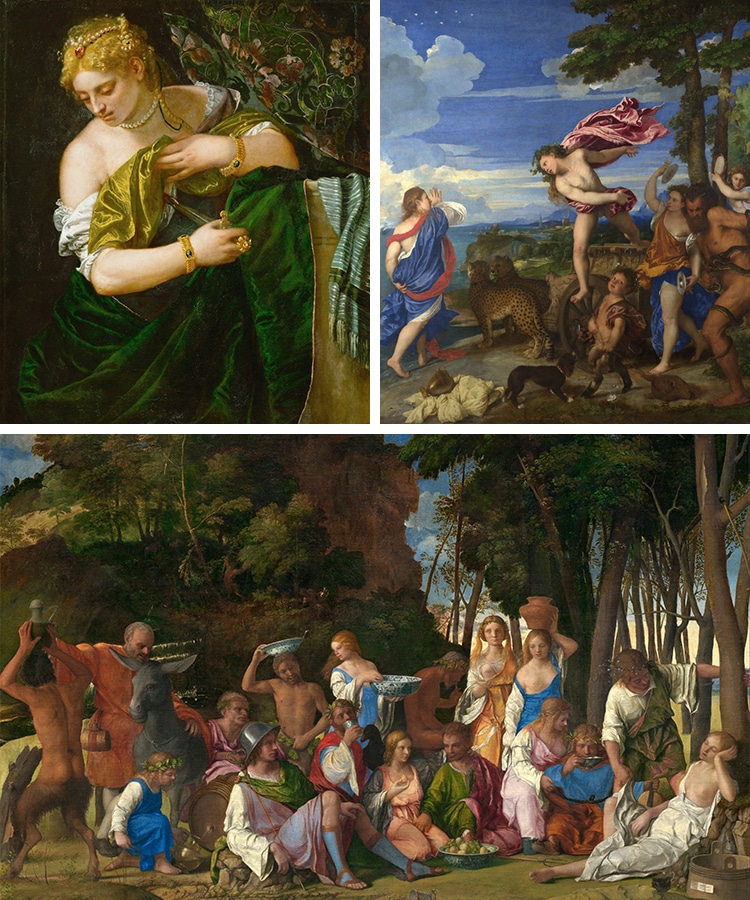
The Italian Renaissance ushered in a new era of art and culture across Italy, lasting hundreds of years. While Raphael, Leonardo da Vinci, and Michelangelo were leading the art of the High Renaissance, another school of painting was forming in Northern Italy that was based on its own set of creative values. The Venetian School produced exquisite works of art that emphasized color over linework.
Beginning with the Bellini brothers, this idealogy adopted the relatively new medium of oil painting to create spontaneous pictures with little or no drawing made beforehand. Instead, artists from this school used numerous layers of pigment to construct their paintings. This approach led to expressive and sumptuously-colored works of art. Giorgione, Tintoretto, and Titian were some of the most influential figures to emerge from this school, whose art greatly impacted the course of Western art history.
Here, we will learn more about the Venetian School and its role in the Italian Renaissance.
The Italian Renaissance
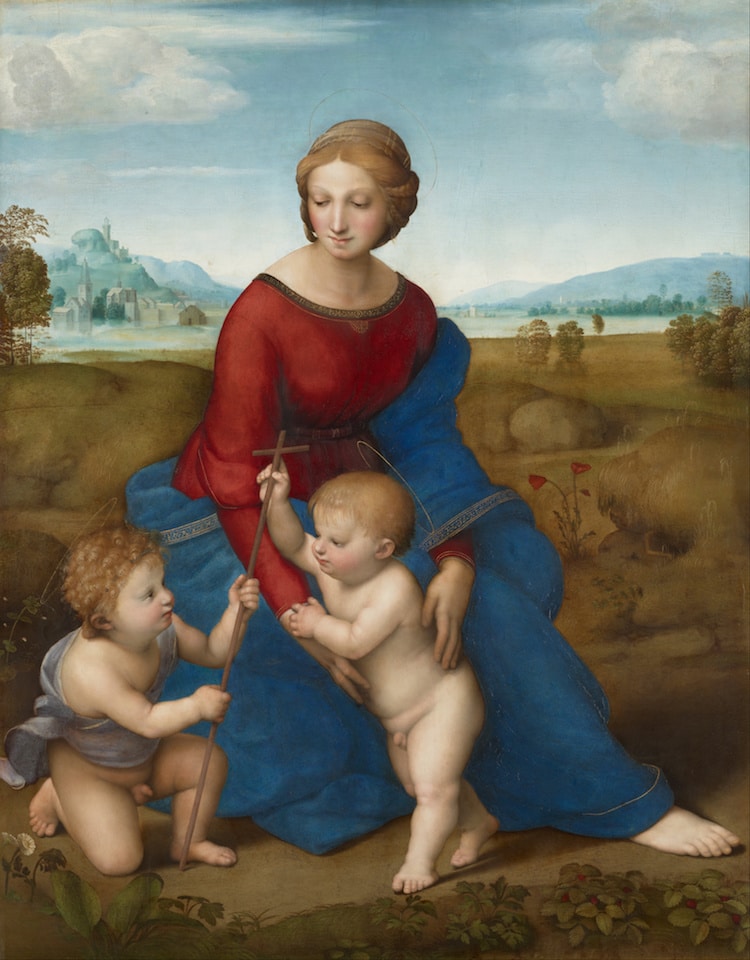
Raphael, “Madonna in the Meadow,” c. 1505 – 6 (Photo via Wikimedia Commons, Public domain)
The Italian Renaissance occurred between the 14th and 17th centuries in Italy. Derived from the word Rinascimento, or “rebirth,” the Renaissance is generally seen as an enlightened age of art and architecture due to a renewed cultural interest in classical antiquity. It is divided into three periods: Early Renaissance, High Renaissance, and Late Renaissance.
Most of the well-known Renaissance artists—including Leonardo da Vinci, Raphael, and Michelangelo—belonged to the High and Late Renaissance, which were both based in Florence and Rome.
The Venetian School
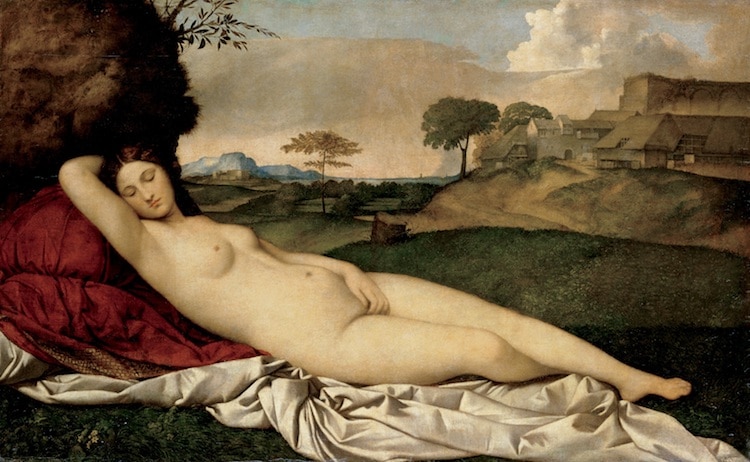
Giorgione, “Sleeping Venus,” 1508 (Photo: Wikimedia Commons, Public domain)
The Venetian School did not blossom until the late 15th century. Its growth was due to several factors. One of the most important was the introduction of Northern Renaissance oil painting techniques by the artist Antonello da Messina. This had a large impact on the careers of Giovanni and Gentile Bellini—two brothers and artists who adopted the medium later in their careers.
Giovanni Bellini, in particular, pioneered many of the techniques that would become emblematic of the Venetian Renaissance, such as modeling and atmospheric color. Later, his students Giorgione and Titian would explore more possibilities of this medium in increasingly color-driven compositions.
Venetian Style
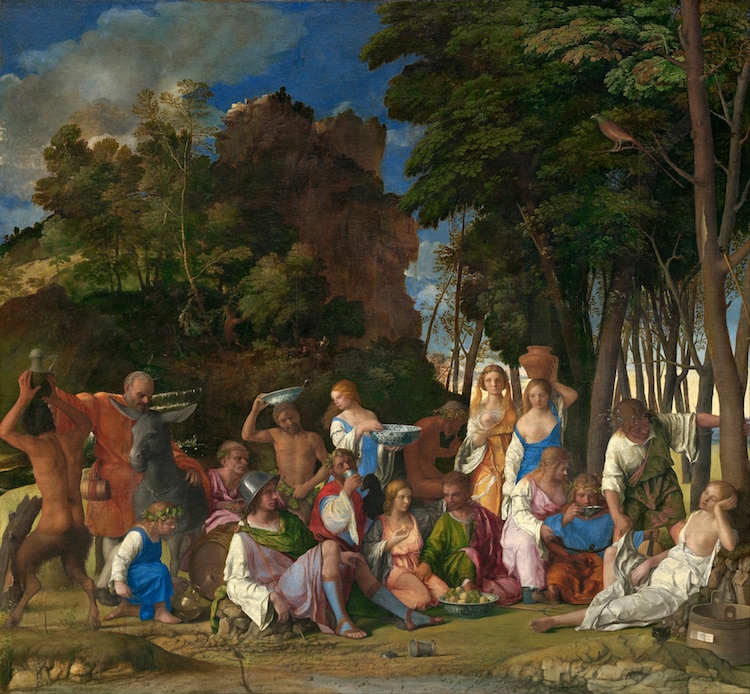
Giovanni Bellini and Titian, “The Feast of the Gods,” begun by Bellini c. 1514 and completed by Titian in 1529 (Photo: Wikimedia Commons, Public domain)
Both the Venetian School and the Florentine School sought the best way to emulate nature in their art. However, while the Florentine School believed in the enlightened powers of drawing, the Venetian School focused on color and its emotional qualities. As a result, many Venetian artists made little or no preparatory drawings for their paintings. Instead, they utilized the luminescent qualities of oil paint to model their subjects, creating numerous layers in the process. Choosing appropriate colors for compositions and blending hues together were other crucial features of Venetian painting.
While foreigners were largely fond of the Venetian style and its artists, the rest of Italy was more critical. Art historian Giorgio Vasari eventually included a section about the Venetian Renaissance in his text Lives of the Most Excellent Painters, Sculptors, and Architects, but he ultimately dismisses their color-driven aesthetic in favor of the Florentine school, which favors drawing first.
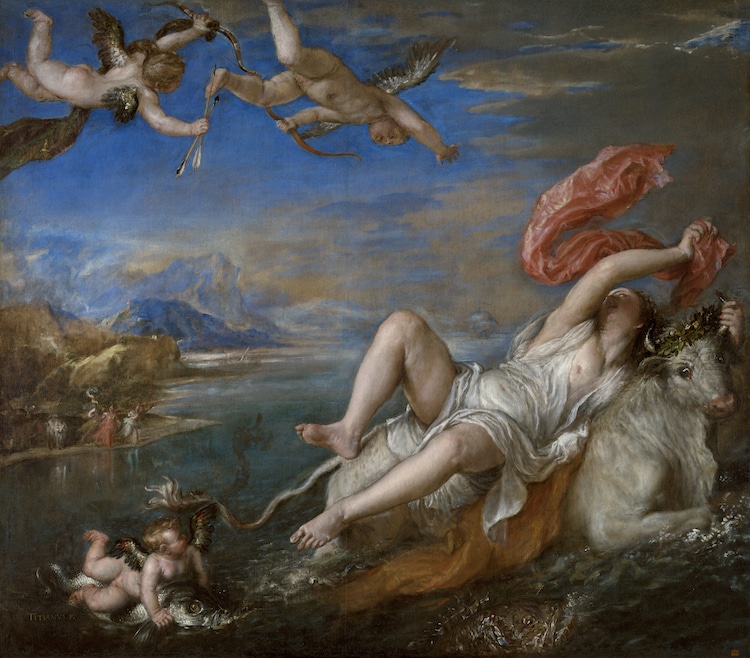
Titian, “Rape of Europa,” c. 1560-2 (Photo via Wikimedia Commons, Public domain)
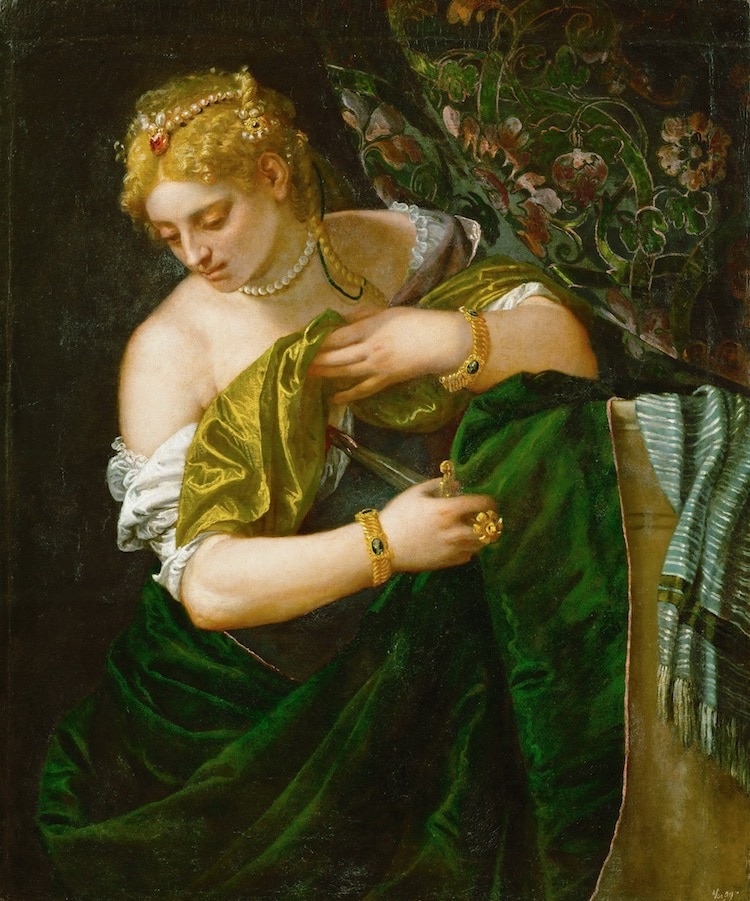
Paolo Veronese, “Lucretia,” c. 1580-3 (Photo via Wikimedia Commons, Public domain)
Famous Artists of the Venetian School
Giovanni Bellini (c. 1435 – 1516)
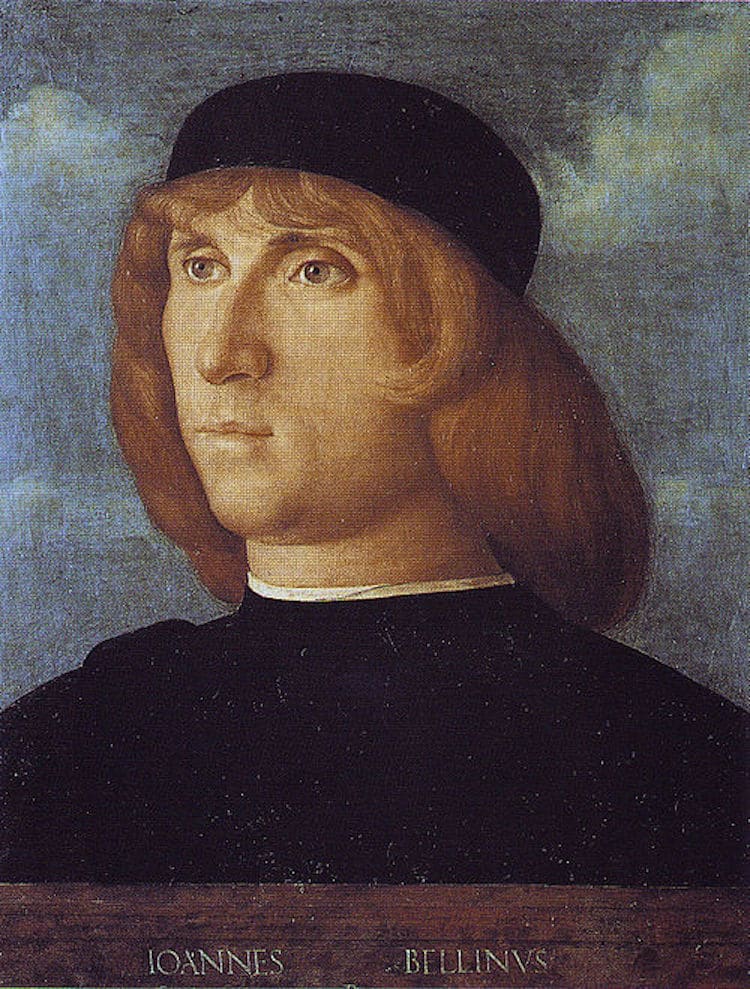
Giovanni Bellini, “Self-Portrait,” c. 1500 (Photo: Wikimedia Commons, Public domain)
Born in the 1400s, Giovanni Bellini is credited as the artist who inspired the Venetian School. After working in the old tempera method for decades, he adopted the oil medium in the 1470s (when he was already in his 40s) and quickly changed his style to suit the qualities of the paint. His later works were richly colored and exhibited many of the features that future Venetian artists would replicate, such as gradation of tones and modeling. He and his brother Gentile taught both Giorgione and Titian in their workshop. Giovanni's last piece, The Feast of the Gods, was completed after his death by Titian.
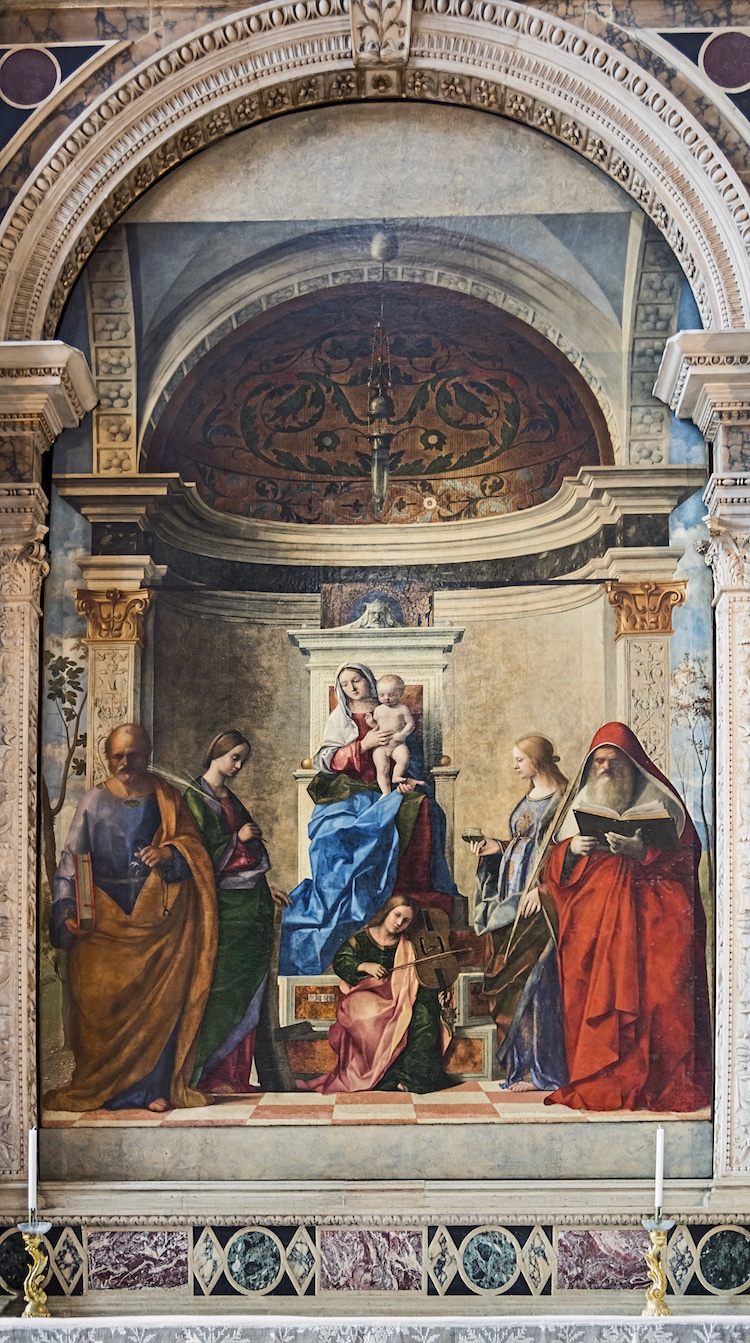
Giovanni Bellini, “San Zaccaria Alterpiece,” 1505 (Photo: Wikimedia Commons, Public domain)
Giorgione (c. 1477 – 1510)
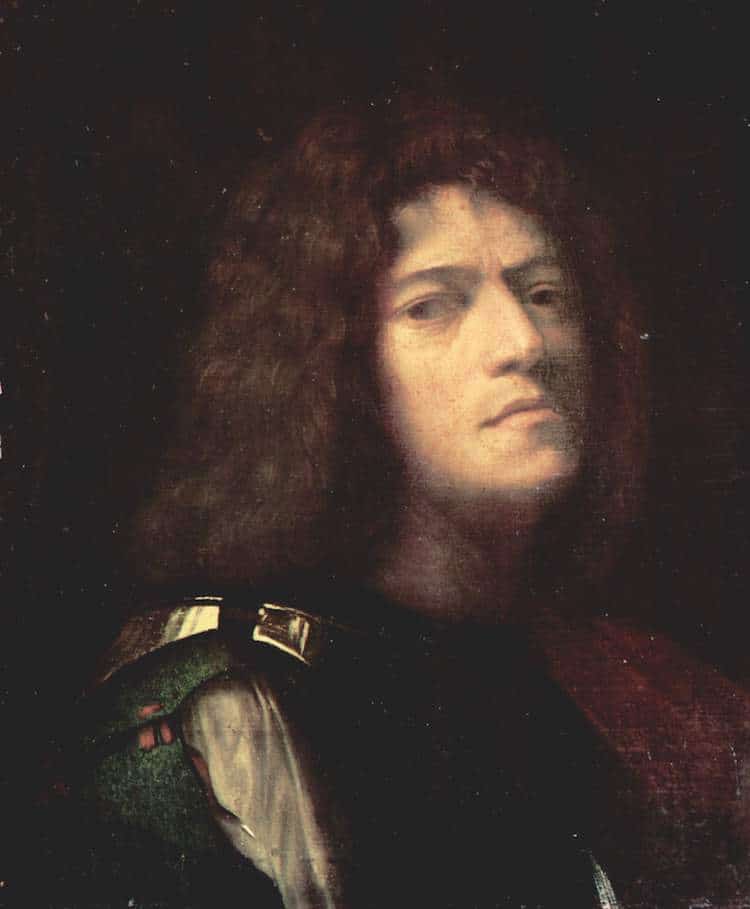
Giorgione, “Self-Portrait as David,” 1508 (Photo: Wikimedia Commons, Public domain)
Although Giorgione only lived until his 30s, he had a major impact on the Venetian School. As a student of the Bellini brothers and a contemporary of Titian, he was surrounded by creative inspirations. His six surviving paintings feature atmospheric coloring, poetic qualities, and mysterious narratives. Additionally, Giorgione's most famous work, The Tempest, has been described as the first landscape in history due to the unprecedented prominence of the Italian countryside.
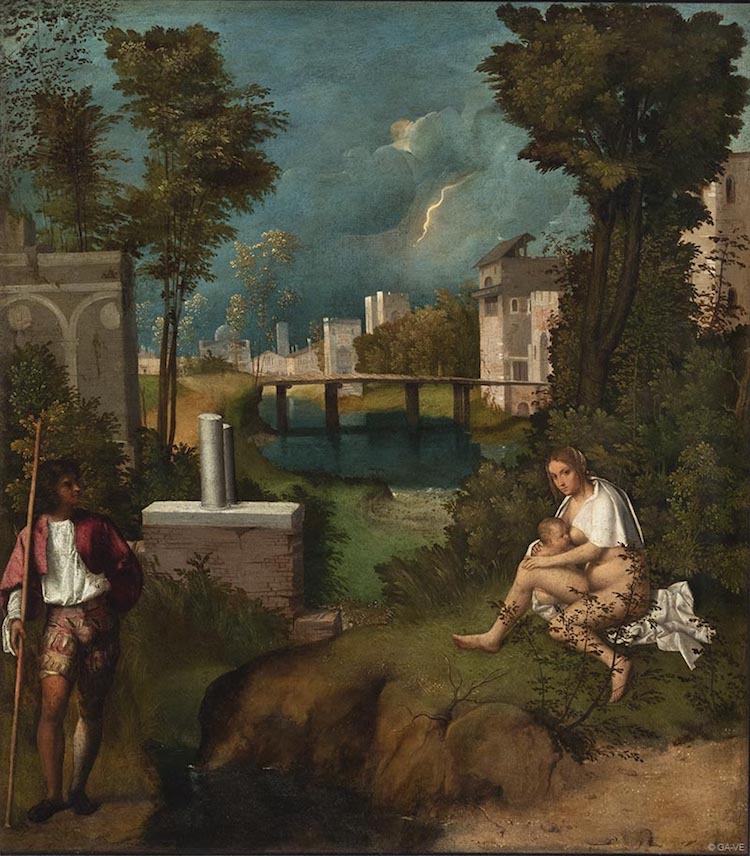
Giorgione, “The Tempest,” c. 1506 (Photo: Wikimedia Commons, Public domain)
Titian (c. 1488 – 1576)
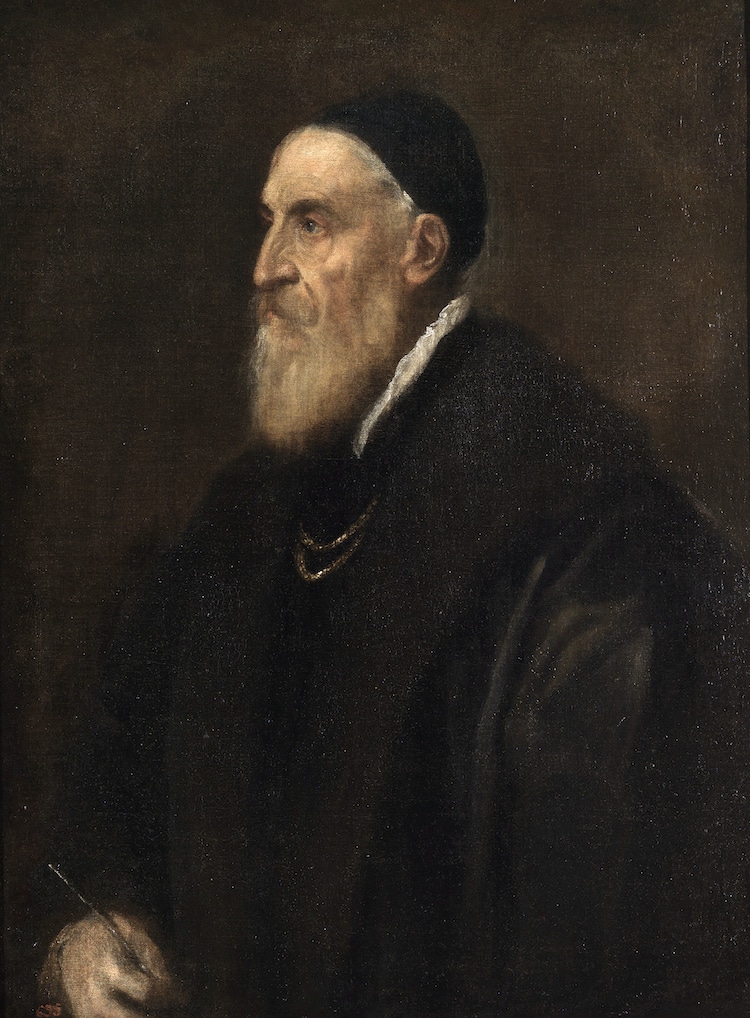
Titian, “Self-Portrait,” c. 1562 (Photo: Wikimedia Commons, Public domain)
After the death of Giorgione in 1510 and Giovanni Bellini in 1516, Titian was the leading upholder of the Venetian style. Slowly, however, Titian began to leave behind the styles of his tutors and fulfill his own artistic vision. Likewise, Titian's fame and popularity as a painter grew, and among the star-studded list of clients were doges, kings, princes, duchesses, popes, cardinals, and fellow artists. Titian achieved equal success to Michelangelo and even obtained the Freedom of the City when he visited Rome in 1546.
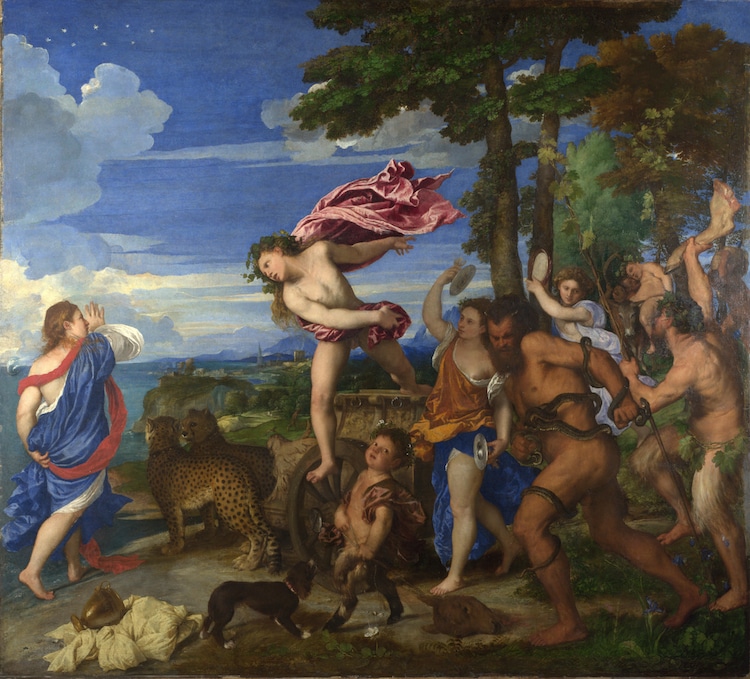
Titian, “Bacchus and Ariadne,” c. 1520 – 1523 (Photo: Wikimedia Commons, Public domain)
Tintoretto (c. 1518 –1594)
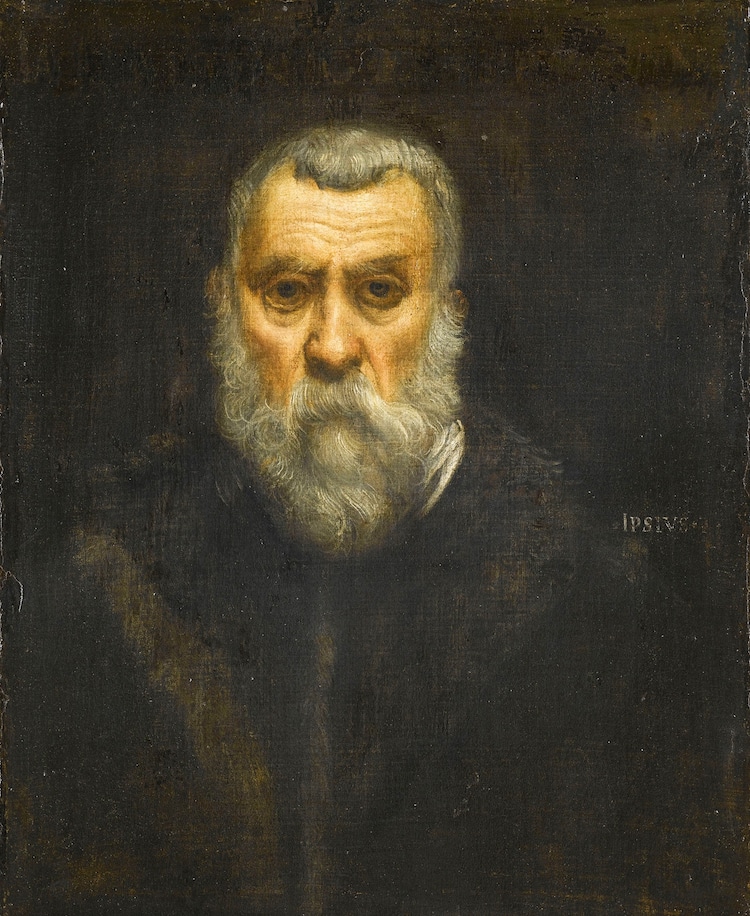
Tintoretto, “Self-Portrait,” c. 1588 (Photo: Wikimedia Commons, CC0 1.0 Universal Public Domain Dedication)
Venice-born artist Tintoretto was known as Il Furioso, or “The Furious,” due to his rapid and bold painting style. His artwork featured muscular bodies in the midst of bold and dramatic movements, dynamic compositions, and expressive brush strokes. In addition to being a major figure from the Venetian School, Tintoretto also painted in the Mannerist style.
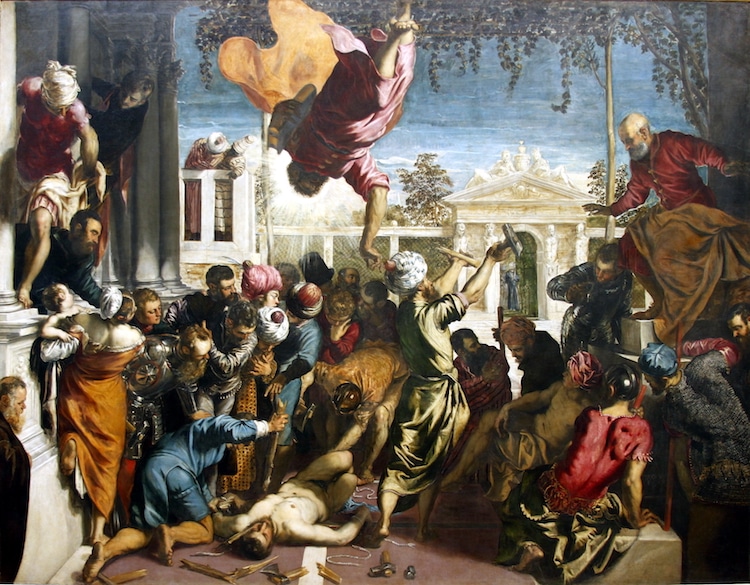
Tintoretto, “The Miracle of the Slave,” 1547 (Photo: Wikimedia Commons, CC BY-SA 4.0)
Paolo Veronese (1528 – 1588)
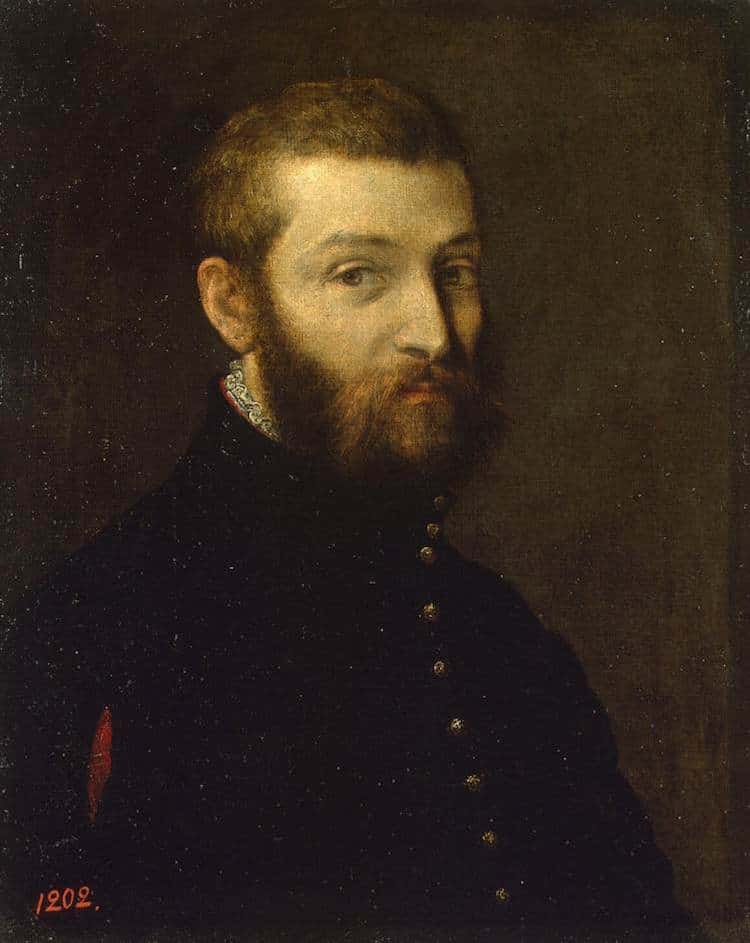
Paolo Veronese, “Self-Portrait,” c. 1558 –1563 (Photo: Wikimedia Commons, Public domain)
Alongside Titian and Tintoretto, Veronese was one of the three figures that led the Venetian School in the 1500s. He is best known for producing massive paintings with crowds of figures placed within his compositions. These works were often based on historical, mythological, and biblical events. Additionally, Veronese's coloring has been noted for its subtlety, oftentimes creating harmony within the painting rather than enhancing a drama.
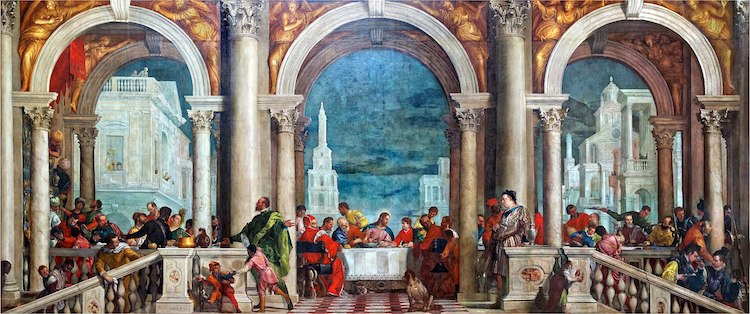
Paolo Veronese, “Feast in the House of Levi,” 1573 (Photo: Wikimedia Commons, Public domain)
Legacy of the Venetian School
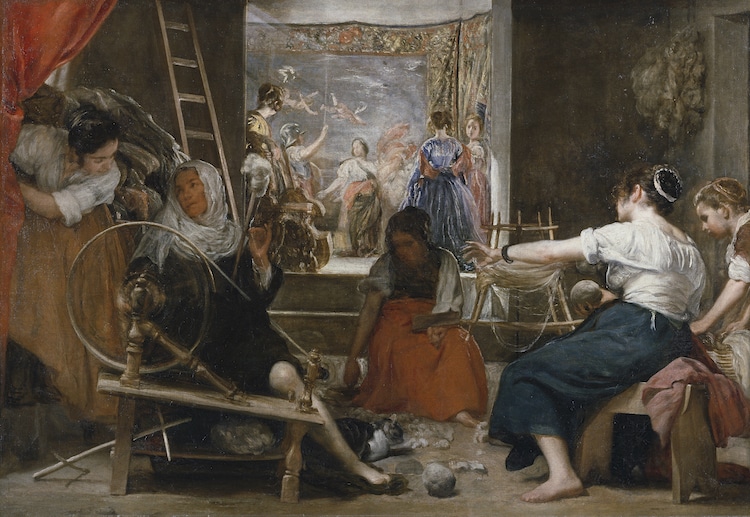
Velazquez, “Las Hilanderas,” c. 1656 (Photo: Wikimedia Commons, Public domain)
Not only was the Venetian School a major component of the Italian Renaissance period, but it also had lasting effects on the course of art history. In particular, artists like Peter Paul Rubens and Diego Velázquez were heavily influenced by the expressive qualities of Northern Italian painters like Titian and Veronese. This lead to an increasing preference amongst painters to favor the emotional traits of color.
Related Articles:
20 Famous Italian Renaissance Paintings That Left Their Mark on History
Sandro Botticelli: The Renaissance Artist Who Became the Master of Mythology Scenes
5 Examples of Renaissance Architecture That Showcase the Elegance of the Iconic Style
Who Was Michelangelo? Get to Know the Renaissance Sculptor and Painter











































































